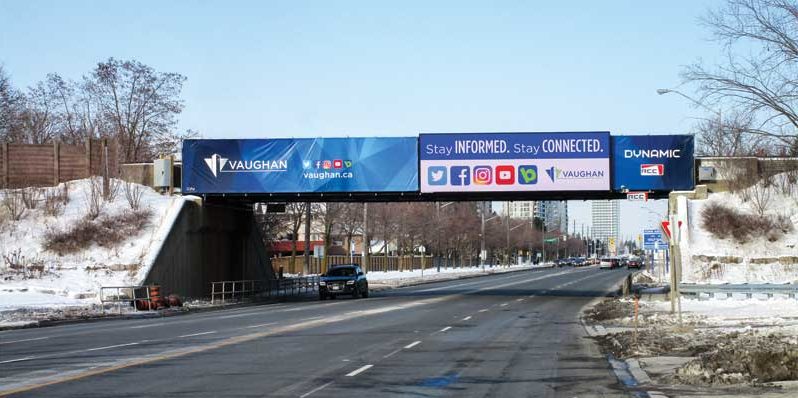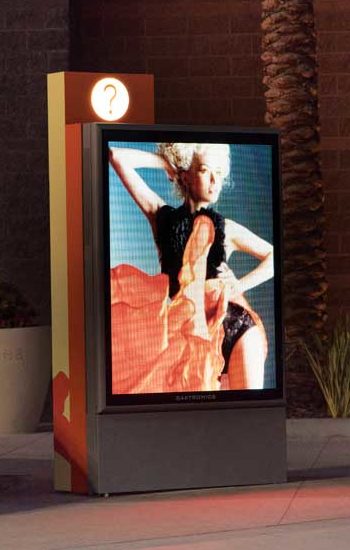
Digital billboard, like this one in Vaughan, Ont., typically display a series of static ads, with transitions every four to 10 seconds.
Part of the digital signage landscape
Digital signage is not a specific technology, but rather a medium, defined by the ability to display dynamic content, including video, real-time streaming information and animation.
A digital signage network comprises a variety of hardware components, which include personal computers (PCs), media players running an operating system (OS) or system-on-a-chip (SoC) interfaces and, of course, the display devices themselves, which can be LED arrays, LCDs or digital projectors. Specialized variations include touch-interactive screens and, most recently, organic LED (OLED) displays, which can offer ‘mirror’ or transparent effects.
These components rely on communications links between transmitters and receivers, from wireless links for short distances to copper wire for medium lengths to fibre optics for distances up to 20 km (12 mi). Another key piece to the puzzle is the content management system (CMS) software.

Among applications for LEDs in signage and display systems, outdoor on-premise signs lead the market.
Leading OOH growth
One area where LED-based digital signage is experiencing significant growth is out-of-home (OOH) advertising, which reaches consumers—as its name suggests—while they are outside their homes. There are a range of OOH formats, including billboards, street posters and transit ads. The revenue from these ads continues to rise overall, thanks in large part to digital OOH (DOOH) media.
“Digital continues to lead OOH growth across all categories and is particularly strong in the transit and street furniture categories,” says Stephen Freitas, chief marketing officer (CMO) for the Outdoor Advertising Association of America (OAAA). “These DOOH formats have a particularly high propensity for driving consumer engagement on mobile devices, too, and that is part of the reason for the significant investments being made by some of the world’s most innovative technology companies.”
DOOH content is also distributed across place-based digital signage networks, where operators can switch between facility-specific information, local event listings, social media feeds and third-party advertising.
Digital billboards typically display a series of static ads, with updates every four to 10 seconds, depending on the applicable municipal regulations. OAAA’s own code of industry practices requires them to comply with brightness standards and not feature animation, flashing lights, scrolling or full-motion video. Rules may vary for on- and off-premise LED signs, based on various markets’ local zoning regulations.
The aforementioned street furniture brings smaller-format LED-based digital signs to both drivers’ and pedestrians’ eye level, where they are most likely to influence consumers while they travel through public spaces and city centres.





